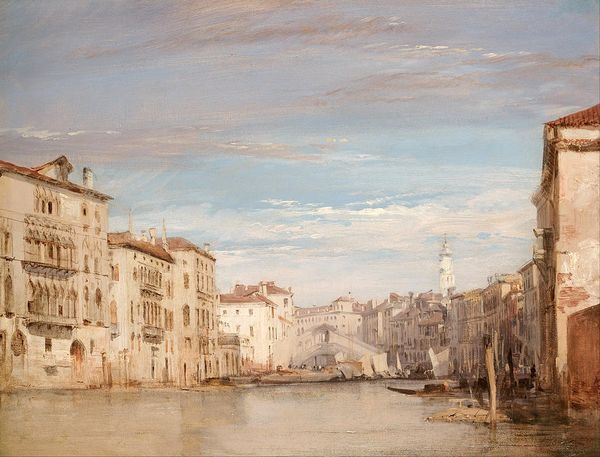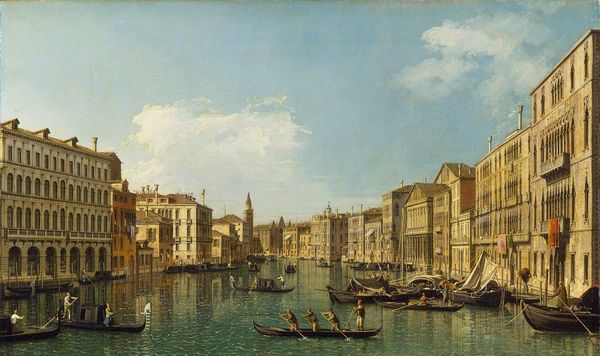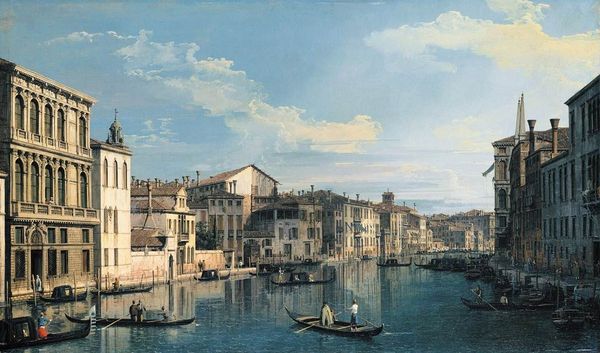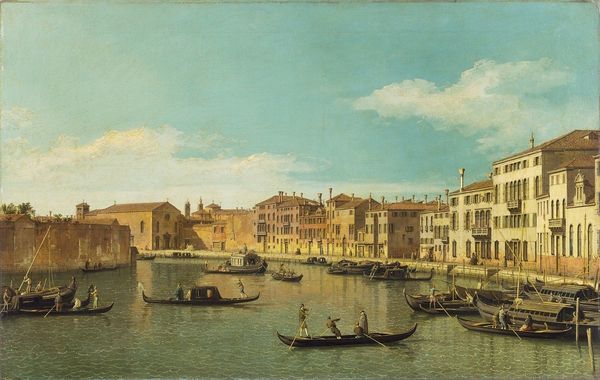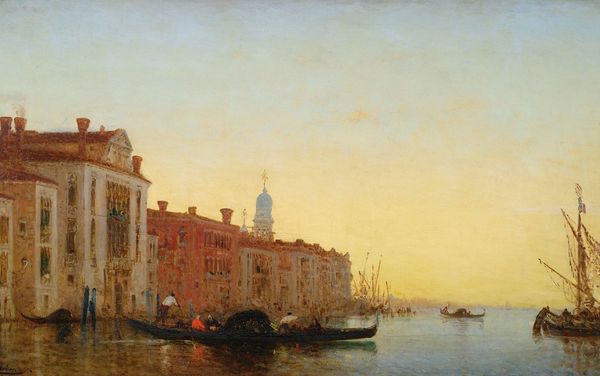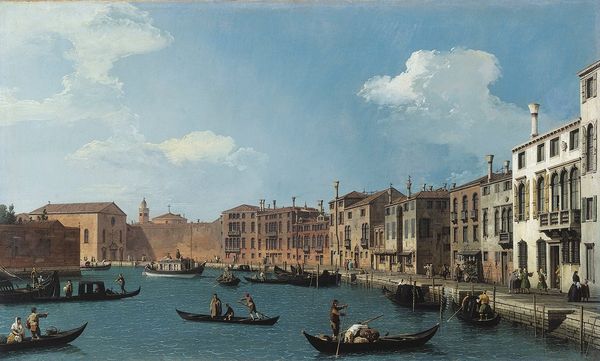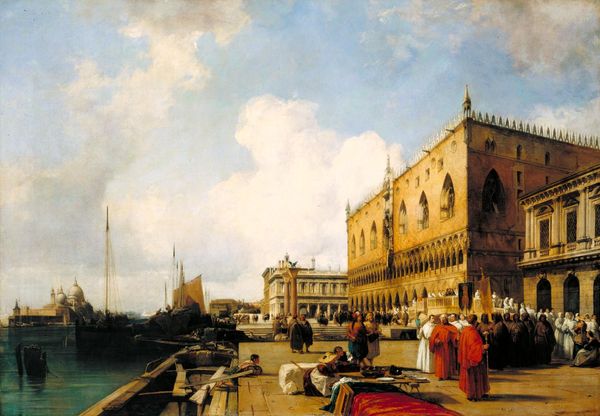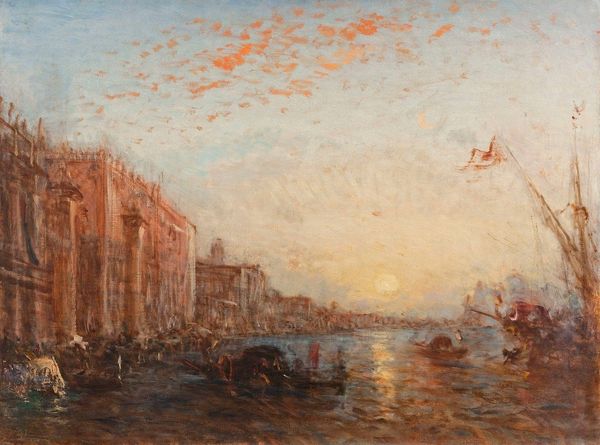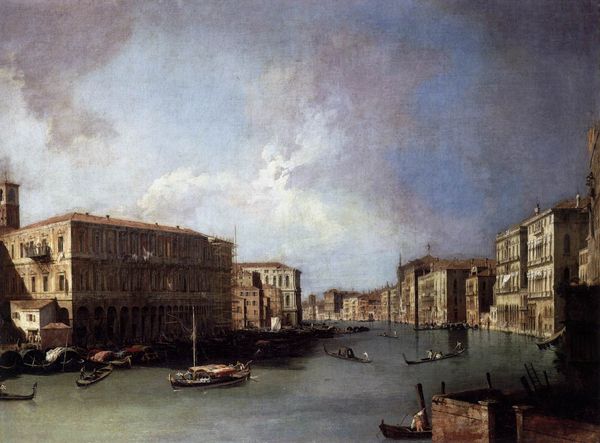
painting, oil-paint
#
venetian-painting
#
painting
#
oil-paint
#
landscape
#
impressionist landscape
#
oil painting
#
romanticism
#
cityscape
#
watercolor
#
realism
Copyright: Public domain
Curator: Richard Parkes Bonington's "Grand Canal Venice" presents a sweeping view of the city, realized, we believe, in oil on canvas. Editor: My first impression is one of serene, faded grandeur. The palette is restrained, almost bleached, and yet the architectural forms still speak of incredible wealth and power. Curator: The material application itself feels significant here. Bonington, trained in watercolour techniques, brings a lightness to the oil paint. Consider how thinly the paint has been applied, almost staining the canvas to create an effect. It blurs the boundary between painting and drawing. Editor: Absolutely. And within that atmospheric haze, certain recurring motifs stand out. The windows, for instance, seem almost like eyes peering out, hinting at stories and histories contained within those facades. We're presented with this image of enduring commerce. Curator: Note also, if you will, how the canal is used. It becomes, essentially, a thoroughfare for both practical trades and luxury items. This body of water becomes, not just metaphorically, but physically, a vessel of labour itself, something that is easy to romanticize in Venetian imagery, of course. The surface quality emphasizes this material exchange through texture. Editor: Those gondolas become symbols of Venice, standing for romance and also decline; its glory days long past as canals are overcrowded with trading boats. What are we truly looking at beyond something obviously scenic and calm? Is this work speaking about cultural memory, the floating dreams attached to an aging kingdom? Curator: Well, in focusing on material elements, we understand the painting as evidence. Bonington worked within a very specific market – what stories about Venice were people eager to consume, and how did materiality affect the purchase? We mustn't shy away from viewing "high art" in relation to economies of acquisition and access. Editor: True, but I see how, through symbols and light, even through what you describe about labour and the market, it creates a powerful sense of melancholy and, yes, the awareness of the passage of time—of civilizations and their unavoidable fading. Curator: Seeing how these readings coalesce in such specific material configurations illuminates both Venice and the complex social context of art production itself. Editor: Precisely, and grasping at how that imagery clings to consciousness across centuries, shaping even current understanding of a city so entrenched in cultural heritage.
Comments
No comments
Be the first to comment and join the conversation on the ultimate creative platform.


